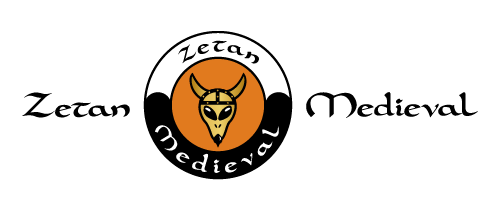Medieval Crossbow S- Xv (42 X 65 Cm)
Zetan MedievoMedieval crossbow S- XV (42 x 65 cm).
| Ballesta medieval S- XV (42 cm ancho x 65 cm largo. 800 gr.). |
In our medieval store you can buy medieval items like this Medieval Crossbow S- Xv (42 X 65 Cm) with the reference ME5056 at the best price 38,37 €. This entire category of Crossbows are decorative products for ornamental use and do not have any functional use.
Medieval crossbows were weapons used to launch arrows over great distances and precision. Crossbows were composed of a rope, usually made of animal hair or plants, and an arched base of wood or metal, called a bow or yardstick. Crossbows could be of different types, depending on their shape, size, power and tensioning mechanism.
Some of the best known types are:
Stirrup crossbow: It was a simple crossbow, with a wooden bow and a rope that was tensioned by resting the stirrup on the ground and pulling with the hands or with a hook. It was the most used type in Europe in the 10th and 11th centuries.
Lever Crossbow: This was a crossbow that had a lever on the back that was used to tension the string. It was faster and easier to load than the stirrup crossbow, but less powerful. It was the most used type in the Middle East and Asia.
Rack Crossbow: This was a crossbow that had a sprocket and chain that were used to tension the rope. It was more powerful and accurate than the lever crossbow, but slower and heavier. It was the most used type in Europe in the 12th and 13th centuries.
Windlass Crossbow: It was a crossbow that had a worm gear and a crank that were used to tension the rope. It was the most powerful and accurate of all crossbows, but also the slowest and most complex. It was the most used type in Europe in the 14th and 15th centuries.
Medieval crossbows were used for both hunting and warfare. Crossbowmen usually carried a quiver of arrows on their back or belt. The arrows had a wooden base and a stone, bone or metal tip. Some arrows had feather stabilizers on the back to improve their flight. Arrows could have different shapes and sizes depending on the type of crossbow and the target.
Medieval crossbows were very effective and influential weapons in history. Some famous battles where crossbows played a decisive role were:
The Battle of Hastings (1066): William the Conqueror's Normans defeated Harold II's Anglo-Saxons thanks to the massive use of stirrup crossbows.
The Battle of Agincourt (1415): The English of Henry V defeated the French of Charles VI with numerical inferiority thanks to the use of windlass crossbows that decimated the French cavalry.
The Battle of Ain Jalut (1260): The Egyptian Mamluks stopped the Mongol advance in the Middle East through the use of lever crossbows that outclassed Mongol crossbows.






